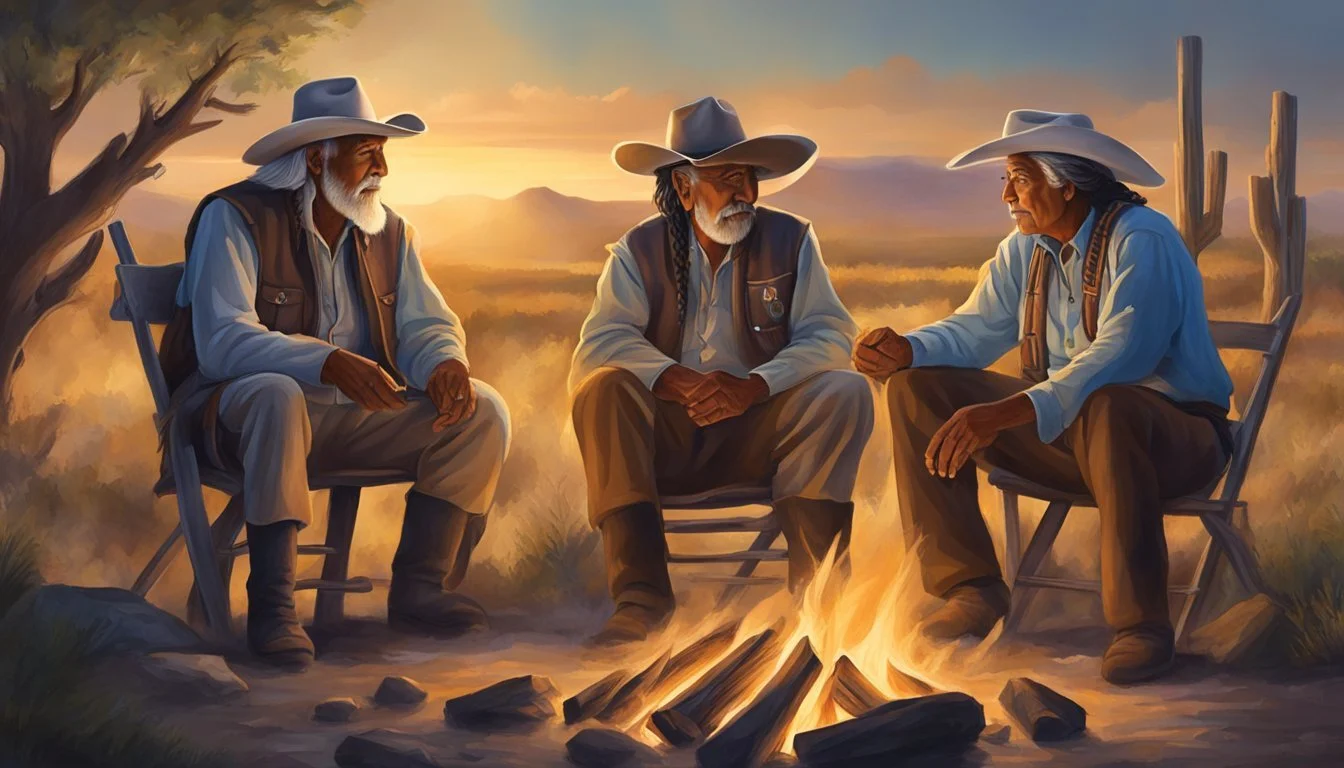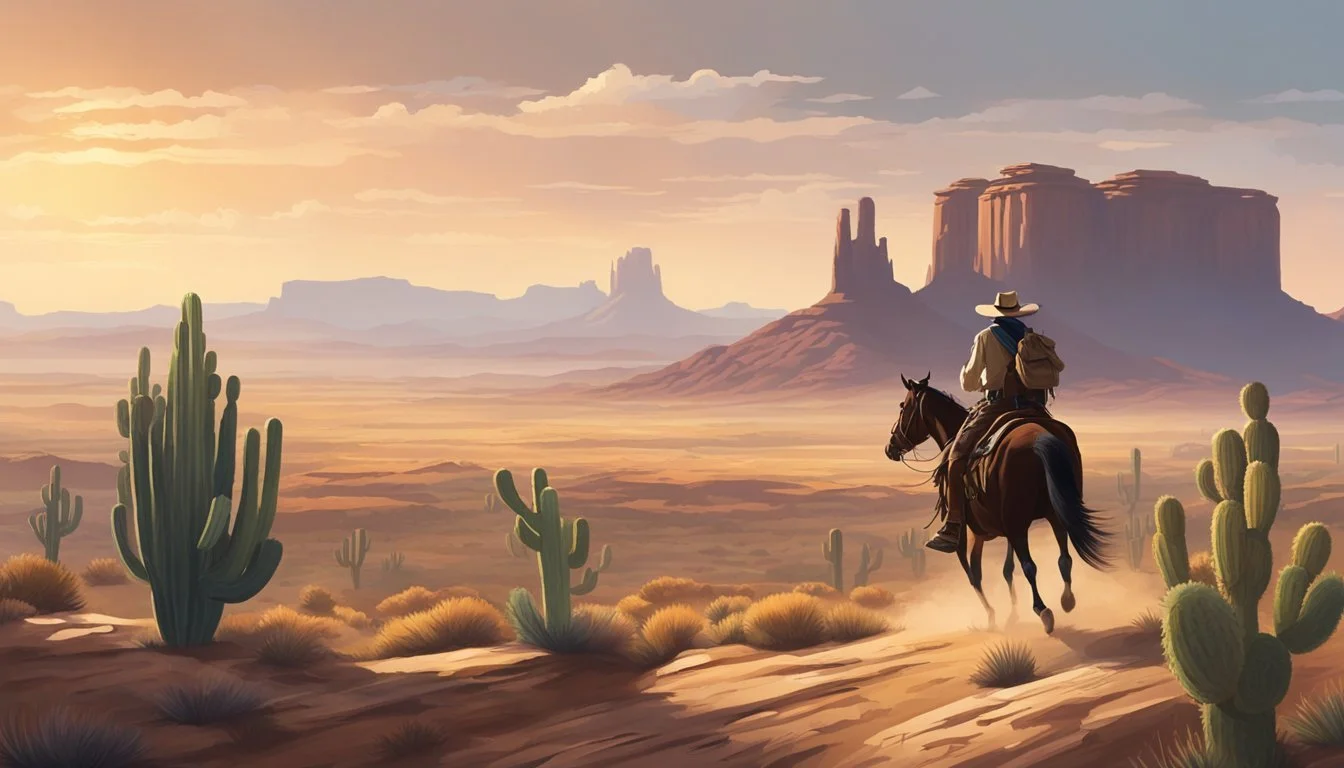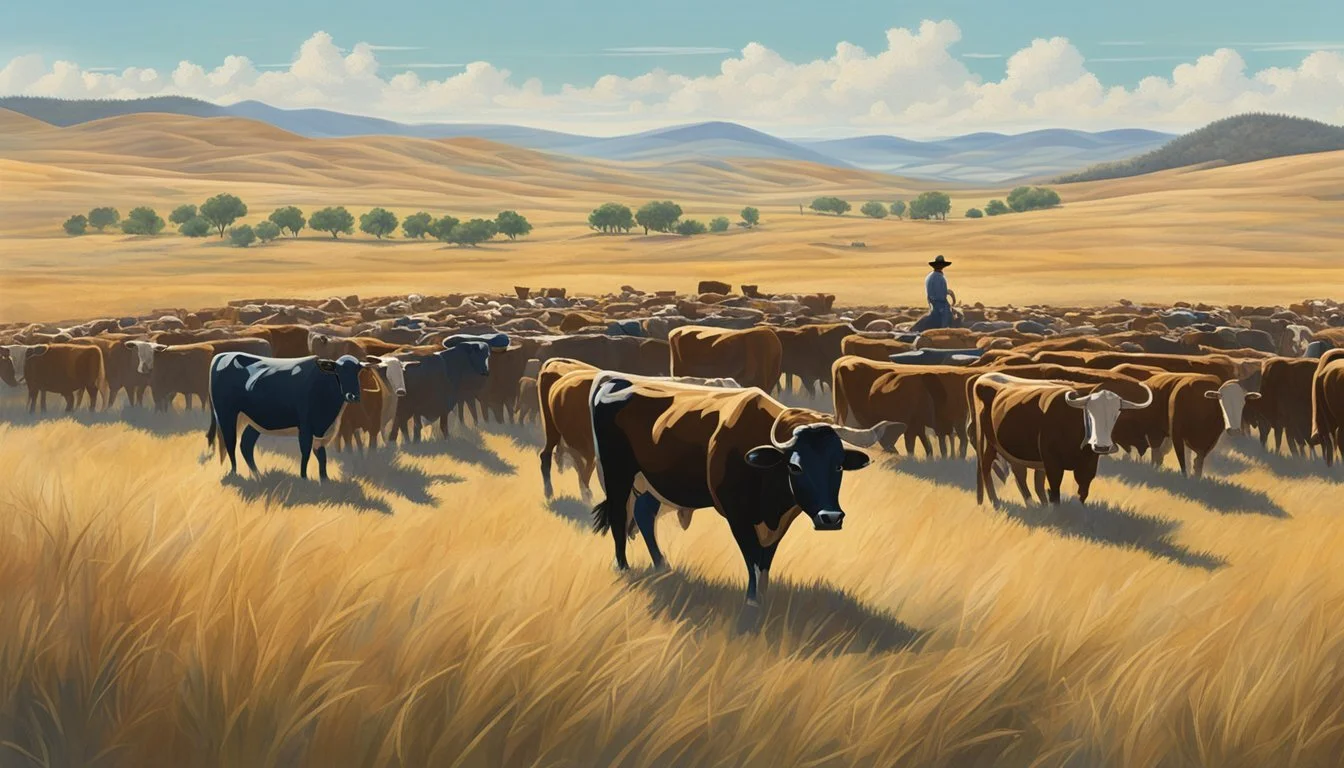The Texas Cowboy's Guide to Native American Heritage
Fostering Mutual Respect and Partnership
The heritage of Texas cowboys is inextricably interwoven with the legacy of Native American tribes that once dominated the region. An exploration into this shared history reveals a complex tapestry of cultural exchange and collaboration. The iconic image of the Texas cowboy did not develop in a vacuum; rather, it emerged from a synthesis of traditions and knowledge, including significant contributions from Native American communities. These interactions facilitated an exchange of skills and knowledge that would come to define much of the cowboy culture.
Native American influence on Texan cowboy heritage is evidenced by the adoption and adaptation of various practical skills necessary for cattle-herding, many of which were learned from the vaqueros—Mexican cowhands. The context of these cultural exchanges expands beyond the simplistic dichotomy often portrayed in popular media. Furthermore, the deep connection to the land shared by both cowboys and Native Americans laid the groundwork for a relationship based on mutual respect and intertwined destinies.
Understanding this shared history sheds light upon the broader Texan identity, one that transcends the simplistic narratives and acknowledges the nuanced roles Native Americans played in the development of the cowboy legacy. This history is not merely academic; it is celebrated in modern Texas, where cowboy traditions persist, influenced by the distant, yet still resonant, contributions of the indigenous peoples who have shaped the Lone Star State's past.
Origins and Evolution of the Cowboy
The Texas cowboy emerged from a rich tapestry of cultural and historical influences, spanning from the skilled Spanish vaqueros to the diverse contributions of African and Native Americans, evolving through the cattle drive era into the modern-day icon of the American West.
Spanish Roots and Vaquero Influence
The roots of Texas cowboys can be traced to the Spanish vaqueros, the original cowboys who arrived in the Americas in the 16th century. Renowned for their cattle-herding skills and horsemanship, these vaqueros were instrumental in shaping the early cowboy culture and practices still in use today.
African and Native American Contributions
Both African Americans and Native Americans played crucial roles in the development of cowboy culture. African-American cowboys, despite facing discrimination, were known for their expertise and have influenced riding styles and cattle-handling techniques. Native Americans contributed significantly to the blending of cultures that underpins modern cowboy practices.
Cattle Drive Era and Rise of the American Cowboy
During the cattle drive era of the 1860s to the 1880s, cowboys in Texas drove millions of cattle to market, firmly establishing the American cowboy as a central figure of the American West's economy and lore. Iconic trails emerged as cattle were moved from Texans ranches through Indian Territory to railheads.
The Role of the Civil War in Cowboy Culture
Following the Civil War, demand for beef surged, catalyzing the cattle industry and the cowboy's role. Displaced soldiers and former slaves found opportunities as cowboys, influencing cowboy culture and helping to repurpose military horses for cattle work.
Expansion of the American West
The allure of cowboy life intensified as stories of adventure spread eastward. Cowboys became synonymous with the American West as westward expansion led to new opportunities for cattle ranching in West Texas, New Mexico, and beyond.
From Drovers to Rodeo Stars
As the open range closed, former drovers turned to rodeo to display their skills. Rodeo, evolving into a professional sport, celebrated cowboy traditions and provided a platform for former ranch hands to compete and showcase their legendary abilities.
Preserving History: Museums and Literature
Museums like the National Cowboy & Western Heritage Museum and the writings of J. Marvin Hunter in Frontier Times help ensure the preservation of cowboy heritage. Books and media stir public interest, immortalizing cowboy history and its indelible mark on American culture.
Influential Figures in Cowboy Legacy
Key personalities like Jesse Chisholm, Sam Houston, Charles Goodnight, and Oliver Loving left indelible marks on the cowboy epoch. Their names adorn trails, cities, and histories, as testament to their influential roles in pioneering the American West.
Modern Day Cowboys
Today's cowboys maintain the legacy, blending tradition with contemporary ranch practices. They epitomize a bridge between past and present, continuing to define cowboy culture within the modern tapestry of American society.
Cattle Ranching: Backbone of the Cowboy Profession
Cattle ranching stands as the historical cornerstone of the cowboy profession, with specific skills and traditions central to its practice, affecting everything from the clothing, such as chaps and boots, to techniques in managing cattle drives and roundups.
Anatomy of a Cattle Drive
During a cattle drive, cowboys would herd thousands of head of longhorn cattle across vast expanses of land. The Chisholm Trail was a notable route that cowboys often used, a network which facilitated the movement of livestock from Texas ranches to Kansas railheads. Key positions included the trail boss, point, swing, flank, and drag riders, each with distinct responsibilities to prevent events like a stampede.
Ranching Techniques and Herding
Cowboys employed a variety of herding techniques to manage and maneuver cattle across the plains. Strategic herding was crucial, using precise movements on horseback to guide the livestock. They used calls, signals, and the positioning of horses to direct the herd, emphasizing controlled and calm movements to maintain order.
Branding, Roundups, and Ropings
Branding and roundups were vital to identifying and keeping track of one's cattle. The branding iron, customized with a ranch's unique mark, was heated and applied to cattle during roundups. Roping skills were vital during these events, as cowboys needed to catch individual animals quickly and efficiently for branding.
Trail and Rail: The Transportation of Livestock
Once gathered, cattle were often transported to market via extensive trail drives. These drives would conclude at railheads, where the cattle were loaded onto trains. The railroad played a pivotal role in expanding the cattle market, connecting ranchers with distant markets and making the business of cattle ranching a nationwide industry.
The Evolution of Cattle Markets
Cattle markets evolved significantly with the development of the railroad, transforming local sales into a national business. Markets and industry players relied on timely information to make decisions, affecting prices and demand across various regions. Livestock auctions became a central component of the cattle market.
Sustainability and Modern Challenges
Modern cattle ranching faces challenges around sustainability, including land management and resource conservation. Increasingly, industry practices spotlight the balance of traditional methods with ecological responsibilities, ensuring the impact on the land is mitigated and efficient use of resources is maintained.
Native American Collaboration and Conflict
Within the expansive landscapes of Texas history, Native American collaboration and conflict with cowboys have both shaped and mirrored the wider cultural exchanges and evolving relations between diverse communities.
Historic Alliances and Trade
In the early stages of frontier development, Native American tribes such as the Cherokee became indispensable allies and trade partners to settlers. Jesse Chisholm, of Cherokee descent, leveraged his knowledge as a guide and interpreter to establish the Chisholm Trail, critical for cattle drives from Texas to Kansas.
Cultural Exchange and Legacy
Cultural interactions were rich between cowboys and Native Americans, resulting in a blended heritage evident in modern festivals and attire. Cowboy boots and spurs, often embedded with Native artistry, reflect this intermingling of traditions.
Territorial Disputes and Resilience
Conflict arose when land and resources were contested. In what is now known as West Texas and along the Red River near Indian Territory, violent encounters often occurred. Despite this, Native peoples resiliently safeguarded their cultural identity.
The Influence of Native American Pathfinders
Native American pathfinders not only guided settlers through treacherous terrains but also taught them land and animal husbandry techniques essential for survival and economic prosperity in the challenging environments of the West.
Native American Representation in Rodeo and Festivals
From rodeos to local festivals, Native American influences are a testament to their deep roots in the cowboy culture of Texas. Their representation and celebrations honor their enduring legacy.
Shared Practices in Herding and Ranching
Both cowboys and Native American tribes demonstrated adeptness in herding and ranching, with shared practices adapting to the harshness of the wild west. These communal skills underscore a heritage of collaboration despite the backdrop of adversity.
Retelling History Through Stories and Art
The stories and artistry from both cowboys and Native Americans serve as memoirs of the past, continuously shaping the narrative of the western trail. Legends and folklore stand as a testament to the intertwined histories of these two communities.
Cowboy Culture: Beyond the Ranch
Cowboy culture in Texas transcends everyday ranch duties, permeating various aspects of social life and entertainment, from the adrenaline-pumping rodeos to the distinctive sartorial choices that have become American icons.
Rodeo: Sport and Entertainment
Rodeos are a dynamic display of cowboy skills, combining sport and entertainment. Competitions in bronc riding, barrel racing, and roping offer cowboys a stage to demonstrate proficiency honed on the ranch. The Houston Livestock Show and Rodeo is one of the largest globally, illustrating the rodeo's historical significance in cowboy culture.
Fashion and Apparel: The Iconic Cowboy Look
Cowboy apparel, with its practical yet distinctive style, includes wide-brimmed hats and cowboy boots, safeguarding against the harsh Texas sun and rugged terrain. The cowboy hat, an enduring symbol, serves more than fashion; it's designed for protection and comfort.
Music and Ballads: Tunes of the Prairie
Tunes echoing from the prairie form the soundtrack of cowboy life. Folk ballads and country music, with lyrics often narrating cowboy trials, carry the legacy of these range roamers. Bob Wills & His Texas Playboys exemplify this fusion of past and present in their popularization of Western swing.
Culinary Traditions: From Chuck Wagon to Cook-offs
Cowboy culinary traditions began with the chuck wagon – a mobile kitchen for cowhands. Dishes like beef stew (What wine goes well with beef stew?) and beans remain staples at cowboy cook-offs, celebrating the culinary art of those who cooked under the wide-open sky.
Cowboy Festivals and Gatherings
Festivals and gatherings keep cowboy camaraderie alive. Annual events like Bandera's National Day of the American Cowboy celebrate ranching history with rodeos, parades, and traditional cowboy competitions, showcasing the enduring social fabric of cowboy culture.
Cowboys in Media: Hollywood and Novels
Cowboys have long captured the imagination in Hollywood westerns and novels. These narratives, while romanticized, reflect a cultural reverence for the cowboy ethos. Films like "The Searchers" and books such as "Lonesome Dove" have immortalized the cowboy in American culture.
Texas: A Unique Blend of Cowboy Heritage
Texas has been pivotal in shaping the traditions of the American cowboy, intertwining a rich tapestry of history, land, and identity which continues to influence both the state and the nation.
Texas's Role in the Development of Cowboy Traditions
Texas's cowboy heritage originated with the vaquero traditions brought by Spanish settlers. Over time, Texans adapted these skills to local needs, leading to the development of the unique American cowboy who became synonymous with the frontier spirit of the West.
Famous Trails and Historic Sketches
Iconic trails such as the Chisholm Trail began in Texas towns like San Antonio, carving through the state to the railheads in Kansas. These routes are documented in works like "Historic Sketches of the Cattle Trade of the West and Southwest," which offer a glimpse into the past business of cattle drives that shaped the economy and landscape.
The Cowboy's Influence on Texas Today
Cowboy culture remains a profound influence across Texas, from ranching and rodeos to music and festivals. This enduring impact reflects a lifestyle that respects the history and traditions of life on the range.
Stockyards and Cattle Baron Legacies
The stockyards in Fort Worth once known as Cowtown, serve as a monument to the cattle barons who made fortunes during the booming cattle market years. Today, these historical sites host visitors from around the world, representing the intersection of business and cowboy legacies.
Cowboys and Texas Identity in the National Imagination
Cowboys are central figures in the telling of Texas history and, by extension, the broader narrative of the American West. Museums, such as the National Cowboy Hall of Fame in Oklahoma City, preserve and tell these stories, cementing the cowboy as a national symbol.
Conservation and Promotion of Texas Cowboy Heritage
Festivals and events across Texas celebrate the cowboy culture, while organizations work to conserve the heritage and promote understanding of the cowboy's role in American history. Their efforts ensure the traditions and values of the Texas cowboy continue to be recognized and cherished.
Conclusion
The intricate tapestry of Texas's past is colored by the figures of cowboys and the Native Americans they encountered. This heritage is not one of just confrontation, but also collaboration, where cultural exchanges and mutual respect shaped both groups profoundly.
Cowboys, as icons of the Lone Star State, evolved from their origins with the vaqueros into symbols of American individualism and resilience. Their interactions with Native Americans often transcended the simplistic narrative of conflict endemic to popular culture, fostering a nuanced relationship that was at times cooperative, especially in terms of trade and shared skills.
The history of Texas is indeed as expansive as the state itself, with the cowboy and Native American heritage providing a unique lens through which to view its growth. From the cattle trails to modern cultural celebrations, the spirit of both cowboy and Native American traditions are evident.
The collaboration between cowboys and Native Americans in Texas is a testament to the state's diverse and inclusive identity. As custodians of this legacy, Texans continue to honor both the cowboy ethos and the profound influence of Native American culture, ensuring that the true story of their shared history is remembered and respected.







